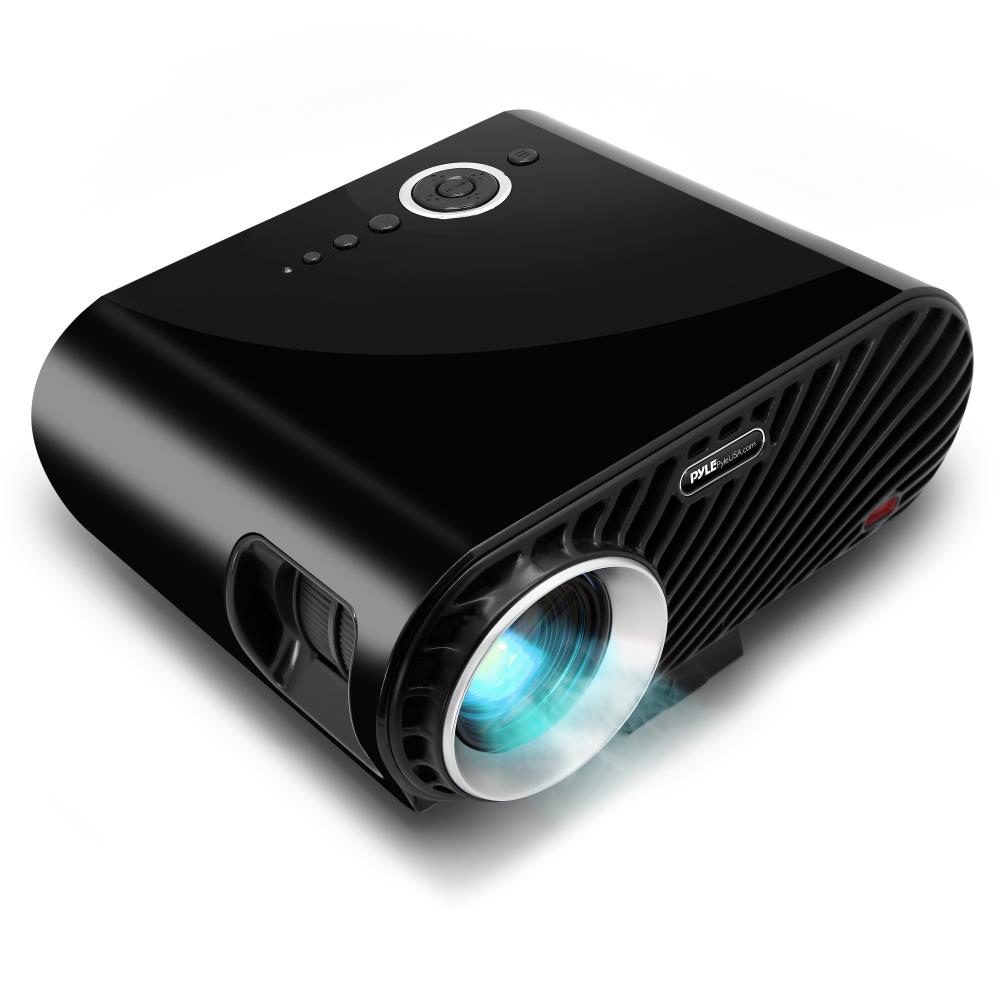Best Small Office Projector
:max_bytes(150000):strip_icc()/3LW4139747_2-611b904b2c664a7084800da517129352.jpg)
In today's dynamic business landscape, even the smallest office needs to project a big image. The right projector can transform cramped quarters into a vibrant presentation space, fostering collaboration and impressing clients. For value-conscious shoppers operating within tight budgets, navigating the sea of projector options can feel overwhelming.
This review focuses on selecting the best small office projector, balancing performance and affordability. This guide is designed specifically for startups, small businesses, and home offices looking to maximize their investment. We'll dissect key features, compare leading models, and offer practical advice to ensure you choose the perfect projector for your needs.
Why a Dedicated Small Office Projector Matters
Forget huddling around a laptop screen! A projector transforms your presentations, training sessions, and team meetings. Projectors provide enhanced visibility and engagement.
A dedicated projector offers more than just increased screen size. It brings professional polish to your small office. It elevates your brand image when hosting clients.
Shortlist: Top Projectors for Small Offices
Here's a curated selection of projectors catering to different budgets and priorities:
- Budget-Friendly Champion: [Model A - e.g., YABER V7 Pro] - Ideal for basic presentations and occasional use.
- Balanced Performance: [Model B - e.g., Epson EX5280] - Offers a good mix of brightness, resolution, and portability.
- Premium Portable: [Model C - e.g., Anker Nebula Capsule Max] - Great for offices prioritizing portability and sleek design.
- Ultra-Short Throw Option: [Model D - e.g., Optoma CinemaX D2] – Perfect for space-constrained environments.
Detailed Reviews
[Model A - e.g., YABER V7 Pro] - The Budget-Friendly Champion
The YABER V7 Pro shines as an entry-level option. It provides solid brightness for dimly lit rooms and acceptable image quality for basic presentations. Its affordability makes it attractive for businesses just starting out or needing a secondary projector.
Pros: Extremely affordable, decent brightness, portable design.
Cons: Lower resolution, basic features, not ideal for brightly lit rooms.
[Model B - e.g., Epson EX5280] - The Balanced Performer
The Epson EX5280 strikes a great balance. It is between price and performance, making it a versatile option for most small offices. Its higher brightness and resolution deliver crisp images and clear text, even in moderately lit environments.
Pros: Good brightness and resolution, easy setup, reliable brand.
Cons: Slightly more expensive than budget options, less portable than pico projectors.
[Model C - e.g., Anker Nebula Capsule Max] - The Premium Portable
The Anker Nebula Capsule Max prioritizes portability and design. This compact projector delivers a surprisingly good image for its size. It features a built-in battery and Android TV, making it perfect for presentations on the go.
Pros: Ultra-portable, built-in battery and Android TV, sleek design.
Cons: Lower brightness than standard projectors, premium price tag.
[Model D - e.g., Optoma CinemaX D2] - The Ultra-Short Throw Option
The Optoma CinemaX D2 is ideal for very small spaces. Its ultra-short throw lens projects a large image from just inches away. This eliminates shadows and the need for ceiling mounting.
Pros: Excellent image quality, ultra-short throw lens, built-in speakers.
Cons: Significantly more expensive, larger footprint than portable projectors.
Side-by-Side Specs and Performance
| Feature | [Model A - e.g., YABER V7 Pro] | [Model B - e.g., Epson EX5280] | [Model C - e.g., Anker Nebula Capsule Max] | [Model D - e.g., Optoma CinemaX D2] |
|---|---|---|---|---|
| Resolution | 1280x720 (720p) | 1280x800 (WXGA) | 1280x720 (720p) | 1920x1080 (1080p) |
| Brightness | [e.g., 9500 Lumens] | [e.g., 3600 Lumens] | [e.g., 200 ANSI Lumens] | [e.g., 3000 Lumens] |
| Throw Ratio | [e.g., 1.5:1] | [e.g., 1.44-1.68:1] | [e.g., 1.2:1] | [e.g., 0.25:1 (Ultra-Short Throw)] |
| Portability | Good | Moderate | Excellent | Poor |
| Price | $ | $$ | $$$ | $$$$ |
| Overall Score | 6/10 | 8/10 | 7/10 | 9/10 |
Practical Considerations
Choosing the right projector involves more than just specs. Consider the following factors:
- Room Size and Lighting: A larger room requires higher brightness. Control ambient light for optimal viewing.
- Resolution Needs: Presentations with detailed graphs or charts benefit from higher resolution. 720p is sufficient for basic presentations.
- Portability Requirements: Do you need to move the projector between rooms or locations? If so, consider a lightweight and compact model.
- Connectivity: Ensure the projector has the necessary ports (HDMI, VGA, USB) to connect to your devices.
- Budget: Set a realistic budget and prioritize features that are most important to your needs.
- Lamp Life and Replacement Costs: Consider the projector's lamp life and the cost of replacement lamps. LED projectors offer longer lamp life.
Key Takeaways
Selecting the best small office projector requires careful consideration of your specific needs and budget. Prioritize brightness, resolution, and portability. Don't forget to factor in room size and lighting conditions.
Assess your connectivity requirements and long-term maintenance costs. Each model reviewed caters to different priorities.
Make an Informed Decision
Choosing the right projector can significantly enhance your small office's presentation capabilities. Weigh the pros and cons of each model. Consider how each projector aligns with your budget and needs.
Take the next step towards a more engaging and professional work environment. Click the links below to explore these projectors further and make your purchase today!
Frequently Asked Questions (FAQ)
Q: What resolution is best for a small office projector?
A: For basic presentations, 720p (1280x720) is often sufficient. However, if you need to display detailed graphs or charts, consider a projector with WXGA (1280x800) or 1080p (1920x1080) resolution.
Q: How much brightness do I need for my small office projector?
A: The required brightness depends on the room size and lighting conditions. For a small office with controlled lighting, 2000-3000 lumens may be sufficient. For brighter rooms, consider a projector with 3000 lumens or more.
Q: What is the difference between ANSI lumens and LED lumens?
A: ANSI lumens are a standardized measurement of brightness. LED lumens are often used by manufacturers to inflate brightness claims. Always compare projectors using ANSI lumens for an accurate comparison.
Q: What is throw ratio, and why is it important?
A: Throw ratio is the distance required to project a certain image size. A lower throw ratio means the projector can be placed closer to the screen. Ultra-short throw projectors have very low throw ratios and are ideal for small spaces.
Q: Are LED projectors better than lamp-based projectors?
A: LED projectors typically offer longer lamp life and lower maintenance costs. However, lamp-based projectors may offer higher brightness at a lower price point.
:max_bytes(150000):strip_icc()/aaxaP7LED-140e267a61bd45bc8b238da1981407f5.jpg)
:max_bytes(150000):strip_icc()/ViewSonicM1-2b9a803f4a4f429fb50a867340496e06.jpg)





:max_bytes(150000):strip_icc()/OptomaML750ST-186671531301441d83482fc01778bc33.jpg)
:max_bytes(150000):strip_icc()/P7_LED_IMG_6276-HERO-05253c788c384482abab9d22f8cb42ae.jpg)
:max_bytes(150000):strip_icc()/4139747-1_5-fd1a9a28318c4acdb48c251248c94885.jpg)
:max_bytes(150000):strip_icc()/APEMANLC350MiniProjector-0e9cf72f4bb84d71a8b6d476b23d89c3.jpg)







